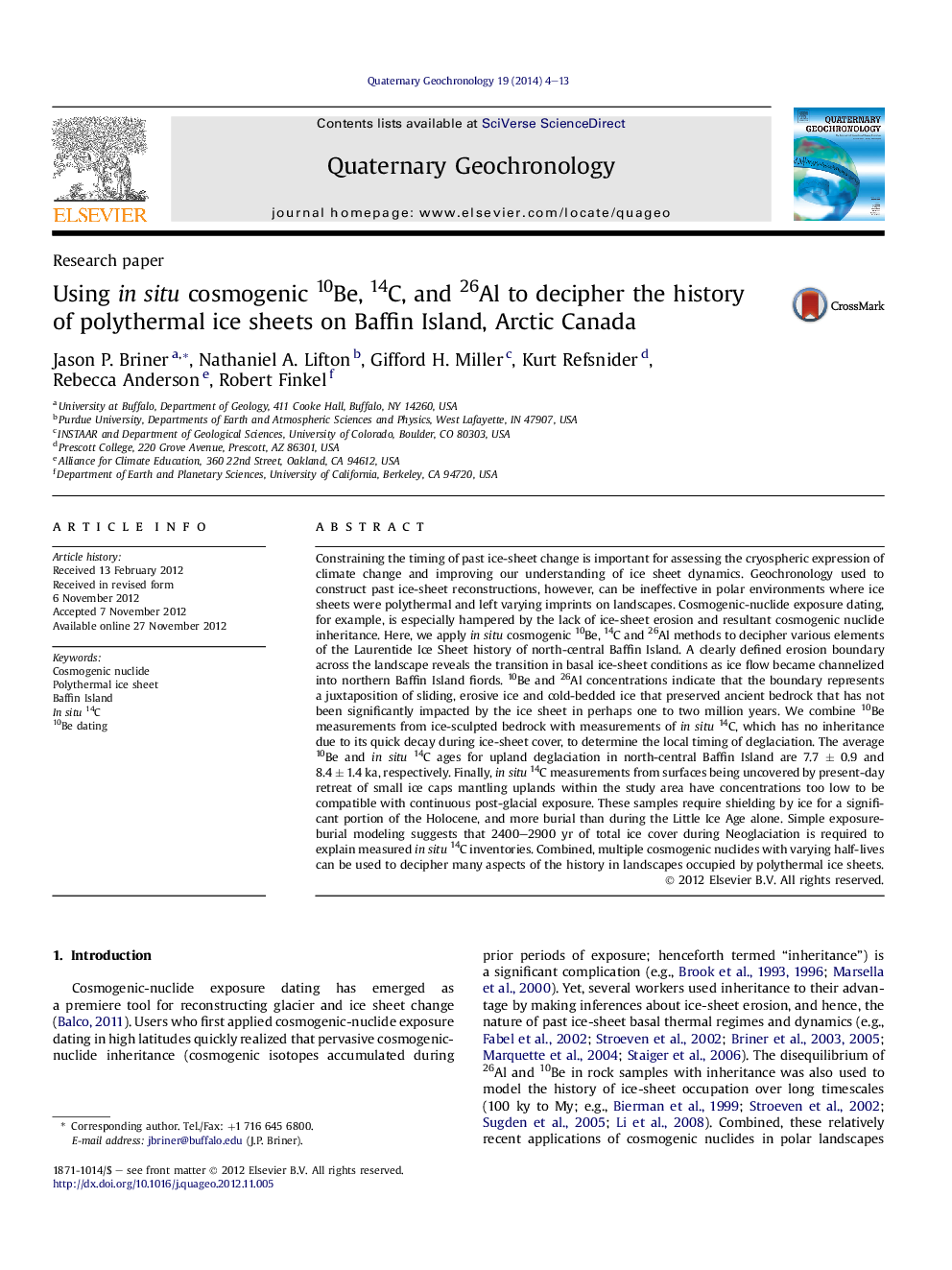| Article ID | Journal | Published Year | Pages | File Type |
|---|---|---|---|---|
| 4724996 | Quaternary Geochronology | 2014 | 10 Pages |
Constraining the timing of past ice-sheet change is important for assessing the cryospheric expression of climate change and improving our understanding of ice sheet dynamics. Geochronology used to construct past ice-sheet reconstructions, however, can be ineffective in polar environments where ice sheets were polythermal and left varying imprints on landscapes. Cosmogenic-nuclide exposure dating, for example, is especially hampered by the lack of ice-sheet erosion and resultant cosmogenic nuclide inheritance. Here, we apply in situ cosmogenic 10Be, 14C and 26Al methods to decipher various elements of the Laurentide Ice Sheet history of north-central Baffin Island. A clearly defined erosion boundary across the landscape reveals the transition in basal ice-sheet conditions as ice flow became channelized into northern Baffin Island fiords. 10Be and 26Al concentrations indicate that the boundary represents a juxtaposition of sliding, erosive ice and cold-bedded ice that preserved ancient bedrock that has not been significantly impacted by the ice sheet in perhaps one to two million years. We combine 10Be measurements from ice-sculpted bedrock with measurements of in situ14C, which has no inheritance due to its quick decay during ice-sheet cover, to determine the local timing of deglaciation. The average 10Be and in situ14C ages for upland deglaciation in north-central Baffin Island are 7.7 ± 0.9 and 8.4 ± 1.4 ka, respectively. Finally, in situ14C measurements from surfaces being uncovered by present-day retreat of small ice caps mantling uplands within the study area have concentrations too low to be compatible with continuous post-glacial exposure. These samples require shielding by ice for a significant portion of the Holocene, and more burial than during the Little Ice Age alone. Simple exposure-burial modeling suggests that 2400–2900 yr of total ice cover during Neoglaciation is required to explain measured in situ14C inventories. Combined, multiple cosmogenic nuclides with varying half-lives can be used to decipher many aspects of the history in landscapes occupied by polythermal ice sheets.
► We use multiple in-situ cosmogenic isotopes to reconstruct glacier history in the Canadian Arctic. ► A sharp subglacial erosion boundary on northern Baffin Island reveals basal ice sheet dynamics. ► The Laurentide Ice Sheet deglaciated north-central Baffin Island ∼7000 years ago. ► In-situ14C data reveal late Holocene ice cap growth.
